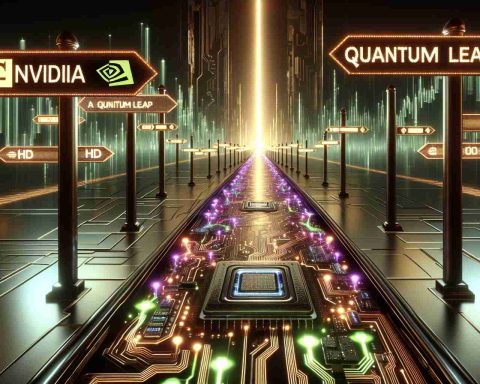Linux GPU Configuration Tool Expands its Horizons with Game-Changing Update
The Linux Advanced Control Tool (LACT), a popular free and open-source application, has embarked on a new journey, now extending its comprehensive support to include NVIDIA GPUs. Previously tailored for AMD users, this transformative update enables NVIDIA enthusiasts to harness a wealth of advanced GPU management features firsthand.
Enhanced Functionality Across the Board
This latest version, 0.6.0, showcases a series of remarkable enhancements crucial for tech aficionados. By integrating with NVIDIA’s NVML library, LACT now offers efficient monitoring and configuration capabilities that surpass the constraints of the traditional NVIDIA control panel, functioning seamlessly even under the Wayland display server.
Global GPU Configuration at Your Fingertips
Users can now enjoy meticulous control over their GPU’s settings. LACT’s update introduces multiple configuration profiles accessible through a user-friendly interface, although they currently require manual switching. Another pivotal advancement allows for precise clocks configuration on AMD integrated GPUs using the latest RDNA2 technology.
Breaking Boundaries with Innovative Solutions
A unique zero RPM mode setting for RDNA3 has been introduced, offering a solution to persistent fan control issues. This feature is slated for the upcoming kernel 6.13, ensuring fans maintain activity regardless of temperature thresholds.
Wide-Ranging NVIDIA Compatibility
LACT’s expanded support covers NVIDIA GPUs from the Maxwell generation onward, promising unprecedented control and customization options for the Linux audience. This development signifies a significant step forward in the realm of Linux hardware configuration, catering to an even broader spectrum of GPU users.
Maximize Your GPU Experience on Linux with These Tips and Tricks
With the recent update to the Linux Advanced Control Tool (LACT), Linux users now have expanded capabilities to fine-tune and optimize their NVIDIA as well as AMD GPUs. This exciting development opens up a realm of possibilities for customizations and improvements in performance. Here are some tips, life hacks, and interesting facts to help you leverage the full potential of LACT and your Linux system.
1. Mastering GPU Profiles
The ability to create and manage multiple configuration profiles is a game-changer. Instead of juggling different settings for various applications or workloads, you can create customized profiles tailored to your needs, such as profiles for gaming, video editing, or power saving. Although switching between profiles is manual right now, a potential automation feature in future updates could streamline this process even further.
2. Utilizing NVML for NVIDIA Cards
With the integration of NVIDIA’s NVML (NVIDIA Management Library), you can monitor and tune your GPU in ways not possible with the default NVIDIA control panel. This allows for deeper insights into your GPU’s performance metrics, such as power consumption and temperature. Regularly monitor these metrics to prevent overheating and ensure optimal performance under intense workloads.
3. Exploring Wayland Compatibility
LACT’s seamless functionality with the Wayland display server is a boon for users looking to escape the constraints of X11. Wayland offers smoother graphics and more efficient rendering, especially with the growing adoption of high-refresh-rate monitors. If you haven’t switched to Wayland yet, consider doing so to capitalize on these enhancements.
4. Tweaking AMD’s RDNA2 and RDNA3 GPUs
For AMD users, the ability to precisely configure clocks and leverage the zero RPM fan mode on RDNA2 and forthcoming RDNA3 GPUs offers significant performance and acoustic benefits. Zero RPM mode is particularly useful for keeping noise levels down during less demanding tasks, though make sure your system temperature stays within safe limits.
5. Preparing for Kernel 6.13 Enhancements
The upcoming Linux kernel 6.13 promises further enhancements, particularly for fan control on AMD GPUs. Ensuring your system is ready for this update will allow you to take full advantage of these improvements as they are released, reducing system noise and enhancing cooling efficiency.
6. Expanding Your Knowledge
As LACT continues to evolve, staying informed about the latest updates and features will ensure you always get the best from your system. Engaging with the Linux community and following developments on forums such as Reddit and GitHub can provide valuable insights and shared experiences from fellow users.
By utilizing these tips and staying on top of updates, you can fully harness the capabilities of your GPU, enhancing performance and efficiency on your Linux machine. Whether you’re a gamer, a developer, or a creative professional, these features can significantly contribute to a more optimized computing experience. Happy tweaking!






















